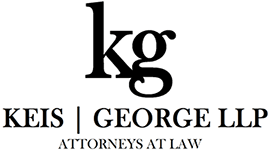Ohio, unlike many other States, is fertile ground for the pursuit of uninsured auto subrogation claims. While there are many reasons for this, one of the primary reasons is because the Ohio Bureau of Motor Vehicles and the law in Ohio make it easier. As we all know, the biggest motivator for an uninsured motorist to pay your subrogation claim is the driver’s license suspension.
A pre-judgment security suspension will suspend a tortfeasor’s driving privileges as soon as thirty days after an accident.
There are two ways to suspend driving privileges under Ohio’s Financial Responsibility Laws:
- A pre-judgment security suspension will suspend a tortfeasor’s driving privileges as soon as thirty days after an accident; and
- A judgment suspension will suspend a tortfeasor’s driving privileges after a judgment is obtained.
The two suspensions are quite different. Under a security suspension, codified in Ohio Revised Code 4509.11 through 4509.29, the BMW will suspend the license and registration of an uninsured driver who is involved in a crash, exceeding $400.00 in damages. However, the BMV shall not enact a security suspension unless a State Crash Report, known as BMV Form #3303, is completed by the insurer, signed off by the insurance company, and submitted to the BMV within six months of the accident. The suspension will be in effect for two years from the date of the accident. The uninsured driver can get this suspension removed by paying the claim in full, entering into a written payment agreement, or depositing with the BMV an amount equal to the damages from the accident. Conversely, if the payment agreement is breached, and the BMV is notified, the BMV will re-suspend, and NO FURTHER PAYMENT AGREEMENTS WILL BE ACCEPTED BY THE BMV.
A judgment suspension will suspend a tortfeasor’s driving privileges after a judgment is obtained.
A judgment suspension, codified at Ohio Revised Code 4509.37, is very different and also administered in a different manner by the BMV. Under this section, a judgment from a lawsuit for damages to property or injury arising from the use, care, or maintenance of a motor vehicle will PERMANENTLY suspend driving and registration privileges until the claim is paid in full, or, a written payment agreement is submitted to the BMV. If the debtor breaches the payment agreement, the BMV will re-suspend with simple notice of the default. The BMV will, however, accept subsequent payment agreements to reinstate.
There are two significant differences between a judgment suspension and a security suspension.
There are two significant differences between a judgment suspension and a security suspension. First, a judgment suspension is permanent – that means forever, until payment arrangements are made. If the payment agreement is breached, the suspension is reinstated. The second difference is that under a judgment suspension, the BMV will accept subsequent payment agreements. This is important because, in most cases, after a default occurs the debtor will again, at some point, have incentive to get the suspension lifted; to gain employment or traffic court issues, etc.
Under a security suspension, the BMV will not accept subsequent payment agreements. For debtors that cannot come up with a lump sum settlement, there is no incentive to make payments.
By accepting supplemental payment agreements the BMV creates an incentive for the debtor to at least start paying again, even if they can’t come up with a lump sum to pay the claim in full. To discuss these judgment recovery tactics or another matter, contact an attorney with our subrogation practice.
